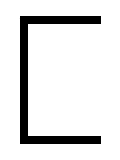Carian language
Carian language was an ancient Anatolian language spoken in the southwestern region of Anatolia, primarily by the Carians, a people who inhabited the area of what is now modern-day Turkey. The language is known from inscriptions, coin legends, and occasional references in ancient authors, providing a glimpse into the culture and history of the Carian people. Despite its significance, the Carian language remains only partially understood due to the limited number of texts and the language's unique features.
History and Discovery[edit | edit source]
The Carian language dates back to the 1st millennium BCE, with most of the surviving inscriptions dating from the 7th century BCE onwards. The discovery of Carian inscriptions has been primarily in the region of Caria, with additional texts found in Egypt, where Carian mercenaries served, and in Greece, indicating the wide-ranging influence and presence of the Carians in the ancient world.
Linguistic Features[edit | edit source]
Carian belongs to the Luwic group of the Anatolian branch of the Indo-European languages. It shares several features with other Anatolian languages, such as Luwian and Lycian, but also exhibits unique characteristics that distinguish it from its relatives. The Carian alphabet, derived from the Greek alphabet with some additional characters, reflects these linguistic peculiarities.
Alphabet and Phonology[edit | edit source]
The Carian alphabet consists of about 38 characters, some of which have no equivalents in the Greek alphabet, indicating sounds unique to Carian. The phonological system of Carian included vowels and consonants that are typical of Indo-European languages, but the exact pronunciation of many Carian sounds remains speculative.
Grammar[edit | edit source]
The grammar of the Carian language, while not fully understood, shows features typical of Anatolian languages, such as agglutination (the combination of morphemes to express grammatical relationships) and gender distinctions. However, the scarcity of texts makes it difficult to draw comprehensive conclusions about Carian syntax and morphology.
Inscriptions and Texts[edit | edit source]
Carian inscriptions have been found on stone monuments, pottery, and coins. These inscriptions are often funerary or dedicatory in nature, providing valuable insights into Carian society, religion, and culture. The texts, however, are frequently short and fragmentary, posing challenges to their interpretation and translation.
Decipherment and Research[edit | edit source]
The decipherment of the Carian language has progressed slowly, with significant advancements made in the late 20th and early 21st centuries. Researchers have utilized bilingual inscriptions, especially those in Carian and Greek, to unlock the meanings of Carian words and phrases. Despite these efforts, much of the Carian language remains a mystery, inviting further scholarly investigation.
Cultural and Historical Significance[edit | edit source]
The study of the Carian language offers important perspectives on the cultural interactions in the ancient Mediterranean world, especially between the Carians and their Greek and Egyptian neighbors. Understanding Carian contributes to our knowledge of ancient trade, warfare, and diplomacy, highlighting the interconnectedness of ancient civilizations.
See Also[edit | edit source]
Navigation: Wellness - Encyclopedia - Health topics - Disease Index - Drugs - World Directory - Gray's Anatomy - Keto diet - Recipes
Search WikiMD
Ad.Tired of being Overweight? Try W8MD's physician weight loss program.
Semaglutide (Ozempic / Wegovy and Tirzepatide (Mounjaro) available.
Advertise on WikiMD
WikiMD is not a substitute for professional medical advice. See full disclaimer.
Credits:Most images are courtesy of Wikimedia commons, and templates Wikipedia, licensed under CC BY SA or similar.
Contributors: Prab R. Tumpati, MD


